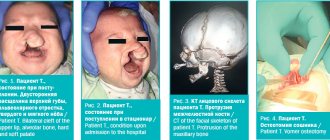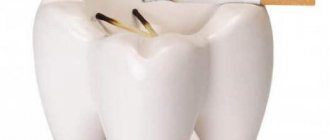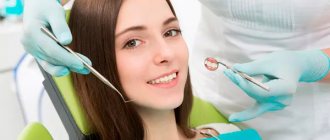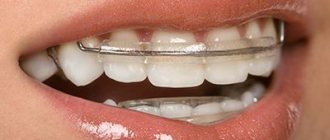Suprastin is perhaps the most famous anti-allergy drug.
A classic antihistamine with a pronounced antiallergic effect. This is a representative of the first generation of the group of antihistamines whose action is rapid, but not long-term. This is precisely what determines its relevance to this day as an emergency aid for lightning-fast allergic reactions and allergic shock. And even with the presence of a huge number of modern representatives of allergy medicine on pharmacy shelves, Suprastin continues to be present in our medicine cabinets to this day.
Composition of the drug.
Chloropyramine hydrochloride.
Excipients: lactose monohydrate, potato starch, sodium carboxymethyl starch, talc, gelatin and stearic acid.
How it works.
Chloropyramine - prevents the development and facilitates the course of allergic reactions, blocks certain histamine receptors - this is a local effect.
As a result, manifestations of allergic reactions - lacrimation, profuse rhinitis, swelling, cough, various rashes simply do not make themselves felt. But the same receptors are also in the brain, and they are responsible for the hypnotic effect. Therefore, taking suprastin is accompanied by weakness, drowsiness, fatigue and absent-mindedness.
When taken orally, the effect appears within 15-30 minutes, the maximum effect develops within 1 hour and lasts approximately 3-6 hours.
Indications
The main indication for the use of Spazgan is spastic pain in the smooth muscle tissue of internal organs. The medicine is also prescribed for migraines, renal colic or biliary colic, to relieve pain due to neurological syndrome.
However, the drug Spazgan is also used in dental practice in the following cases:
- superficial or deep caries;
- painful eruption of wisdom teeth;
- pathological processes in the pulp;
- fluxes, cysts in periodontal tissues;
- inflammation of the gums;
- period after tooth extraction;
- jaw injury;
- recovery after dental surgical treatment;
- the first week of adaptation to the braces system, etc.
Methods of application.
The tablets are taken orally during meals, without chewing and with a sufficient amount of water.
Adults are prescribed 1 tablet 3-4 times a day (75-100 mg per day).
Children aged 3 to 6 years: 1/2 tablet (12.5 mg) 2 times a day; daily dose – 25 mg.
At the age of 6 to 14 years: 1/2 tablet (12.5 mg) 2-3 times a day; daily dose – 25-37.5 mg.
At the age of 14 to 18 years: 1 tablet (25 mg) 3-4 times a day; daily dose – 75-100 mg.
The dose in children can be gradually increased unless the patient experiences side effects, but the maximum dose should never exceed 2 mg/kg body weight.
The duration of treatment depends on the nature, symptoms of the disease, the degree of their manifestation, the duration and course of the disease.
Compound
The effect of the drug Spazgan is due to the main active ingredients:
- Metamizole sodium (500 mg). An effective analgesic and antipyretic that relieves toothache and reduces fever. The dose contained in one tablet or one ampoule can cause pain relief for 4-6 hours.
- Pitophenone hydrochloride (2 mg). It has analgesic, antipyretic and anti-inflammatory effects. It is an antispasmodic that dilates blood vessels, due to which it relieves muscle tone and relaxes muscles.
- Anticholinergic blocker - fenpiverinium bromide (0.1 mg). Slightly inhibits the pain centers of the nervous system, which helps reduce the intensity of toothache and relieve spasms.
Metamizole sodium, which has the main effect in Spazgan, is banned in a number of countries, as it can cause agranulocytosis - a significant drop in the level of leukocytes. This affects the protective functions of the immune system. Because of this ban, a similar composition of Spazgan Neo has been developed, in which ibuprofen is the active substance instead of metamizole sodium. This does not reduce the effectiveness of fighting toothache.
Special recommendations.
Elderly patients, as well as those with impaired liver and/or kidney function, cardiovascular system, angle-closure glaucoma, urinary retention, prostatic hyperplasia, should take the drug with caution.
In newborns whose mothers took antihistamines in the last months of pregnancy, there have been cases of neonatal retrolental fibroplasia. Accordingly, the use of Suprastin® during pregnancy is contraindicated.
The use of Suprastin® is contraindicated during breastfeeding. If it is necessary to use the drug during lactation, breastfeeding should be stopped.
The drug, especially in the initial period of treatment, may cause drowsiness, fatigue and dizziness. Therefore, in the initial period, the duration of which is determined individually, driving vehicles or performing work associated with an increased risk of accidents is prohibited. After this, the degree of restriction on driving and operating machinery will be determined individually for each patient.
Features of taking pills
Spazgan in tablet form has a more extensive list of additives than the injection solution. This allows you to achieve the following:
- give the tablet strength and dosage accuracy of all substances;
- ensure a constant intensity of drug dissolution in the gastrointestinal tract;
- increase shelf life.
An extensive list of excipients provokes a more frequent occurrence of allergic reactions compared to the injection solution.
To get rid of toothache, Spazgan is not prescribed to children under 8 years of age. Other age categories can take the medicine as follows:
- 8-11 years – half a tablet every six hours;
- 12-14 years - 1 tablet every six hours, but with intense pain you can take 1.5 tablets at a time;
- over 15 years old – up to 2 tablets every 6 hours.
Do not chew the tablets and wash them down with water.
Side effects.
Side effects, as a rule, occur extremely rarely, are temporary, and disappear after discontinuation of the drug.
- Disorders of the blood and lymphatic system: leukopenia, agranulocytosis, hemolytic anemia and other changes in the cellular composition of the blood (for example, thrombocytopenia with long-term use of the drug).
- Immune system disorders: allergic reactions.
- Nervous system disorders: drowsiness, fatigue, dizziness with a sensation of spinning (vertigo), nervous agitation, ataxia, tremor, headache, euphoria, convulsions, encephalopathy.
- Violations of the organ of vision: blurred vision, attacks of glaucoma, increased intraocular pressure.
- Cardiovascular system disorders: decreased blood pressure, tachycardia, arrhythmia.
- Gastrointestinal disorders: abdominal discomfort, dry mouth, nausea, vomiting, diarrhea, constipation, loss or increase of appetite, pain in the upper abdomen.
- Musculoskeletal and connective tissue disorders: myopathy. — Disorders of the kidneys and urinary tract: difficulty urinating, urinary retention.
- Skin and subcutaneous tissue disorders: photosensitivity.
If any of the above effects occur, stop taking the drug and consult a doctor immediately.
Action
The drug is classified as a moderate-acting toothache remedy. Its work is based on blocking the production of substances that irritate pain receptors in the neurovascular bundles and soft tissues around the tooth. For this reason, Spazgan is a relatively safe painkiller.
In addition to relieving pain, the drug has an anti-inflammatory effect, reduces burning and a feeling of fullness in the gums. An antipyretic effect is also observed, which may be required in case of an intense pathological process or infection of the dental canals. Smooth muscles relax under the influence of Spazgan's components, and this helps get rid of unpleasant sensations.
Features of using injections
The use of Spazgan injection solution gives a faster effect compared to tablets. In addition, in this case the drug is not carried through the gastrointestinal tract. But it is important to remember that if you are allergic to any substance in the composition, the reaction will be more pronounced than when using the tablet form.
For toothache, the use of Spazgan injections is advisable only if it is impossible to take the medicine orally. For example, with a pronounced gag reflex in the patient or with simultaneous vomiting caused by another disease.
The dosage of Spazgan is as follows:
- patients weighing 30-40 kg – 1 ml 4 times a day intramuscularly;
- 40-50 kg – 1.6 ml 4 times a day;
- with a weight of more than 50 kg - 2 ml 5 times a day.
Before administering Spazgan, the contents of the ampoule must be warmed to body temperature. To do this, hold it in your palms for a couple of minutes.
Intravenous administration to combat toothache is not recommended.
How to get rid of headaches with cervical osteochondrosis
To relieve headaches, including those with cervical osteochondrosis, analgesics in combination with antispasmodics help well. For severe muscle tension and irritation, nonsteroidal anti-inflammatory drugs (NSAIDs) can be used. However, it must be remembered that these drugs do not treat the underlying disease, providing only symptomatic care, and at the same time they have a number of serious side effects. Thus, analgesics and NSAIDs, including those containing diclofenac, suppress bone marrow function, lower immunity, inhibit gastric secretion, irritating its mucous membrane and provoking the development of gastritis, and reduce blood clotting. In addition, it has been proven that systematic or frequent use of diclofenac increases the risk of heart attack by 40%, and NSAIDs in general lead to the formation of gastropathy, gum ulceration, pancreatitis and aphthous stomatitis. Antispasmodics can cause the opposite effect - increase dizziness, headache, and also cause palpitations and more complex arrhythmias.
Recently, Botox injections have been used to relieve spasms. However, botuloxin is a strong poison; in addition to the unpredictable individual reaction of the body, it can cause headaches, muscle weakness up to paresis of some muscle groups, disruption of the gastrointestinal tract and respiratory system. With each repeated use, the effect of the drug decreases.
Neuroprotectors have a prolonged (long-lasting) effect, improving metabolism in brain tissue and thereby relieving pain. However, such drugs must be taken in long courses, but if used uncontrolled, they can cause dizziness, headaches, anxiety, increased blood pressure and arrhythmia.
It is important to remember that in this case, a headache is only a symptom of the disease. In addition to symptomatic care, it is necessary to direct efforts to fight the disease itself - the spine needs to be treated.
Conservative treatment of osteochondrosis, in addition to the use of painkillers and antispasmodics, should include the use of hydroprotectors, vitamin complexes, as well as exercise therapy and physiotherapy.
Electrophoresis is the most commonly used physiotherapy procedure. Its essence is a local increase in temperature and improvement of blood circulation, which relieves muscle spasms, eliminates pain and speeds up the healing process. In general, any thermal procedures relieve muscle spasms and improve blood circulation.
Magnetotherapy involves the use of low-frequency magnetic field inductors aimed at the problem area, which leads to local dilation of blood vessels, improved oxygenation and metabolism, accelerated elimination of toxins and reduced blood viscosity. Thanks to this, magnetic therapy has an anti-inflammatory, analgesic and anti-edematous effect.
Effective assistance in the treatment of osteochondrosis of the cervical spine can be provided by a modern drug - the therapeutic pain-relieving anti-inflammatory patch NANOPLAST forte.










